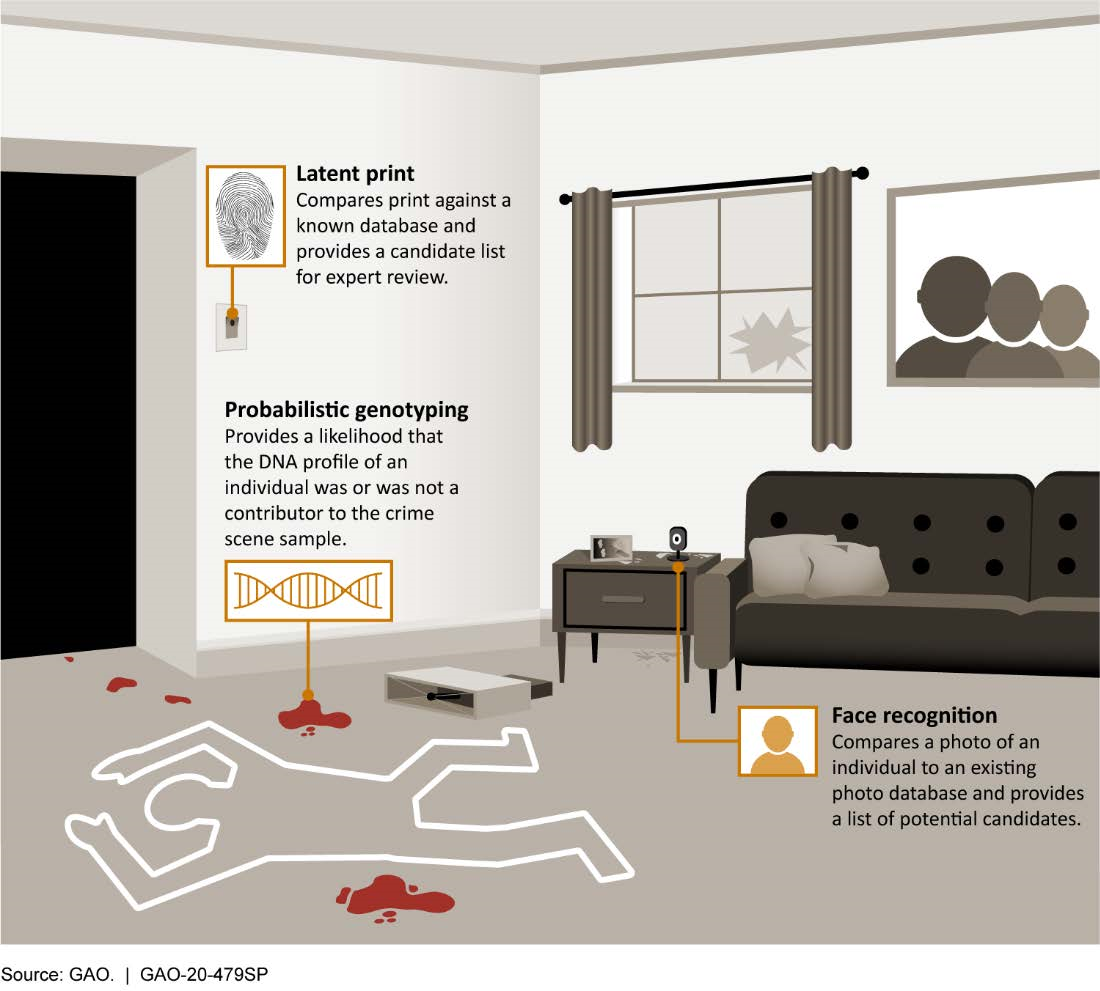Forensic Technology: Algorithms Used in Federal Law Enforcement
Fast Facts
Law enforcement has long used physical evidence, such as fingerprints, to help solve crimes. Now, computer algorithms can help assess whether such evidence might be associated with a specific person—a process known as forensic attribution.
Federal agencies mainly use 3 types of forensic algorithms:
- Face recognition compares a photo from a criminal investigation to an existing photo database
- Probabilistic genotyping helps determine the likelihood that a person’s DNA may have contributed to DNA collected as evidence
- Latent print analysis compares prints to a known database and provides a list of potential candidates for an expert to review

Crime scene
Highlights
What GAO Found
Federal law enforcement agencies GAO reviewed are primarily using three types of forensic algorithms to help assess whether or not evidence collected in a criminal investigation may have originated from an individual: probabilistic genotyping, latent print (fingerprint and palm print) analysis, and face recognition. To a lesser extent, agencies also use algorithms to compare iris images, speech, and handwriting. Each type of algorithm uses different characteristics in its assessment. For example, probabilistic genotyping uses statistics to analyze biological samples found during a criminal investigation to assist in comparisons to a known DNA sample taken from a suspect, or to DNA data profiles from a database of known persons. The Federal Bureau of Investigation currently uses probabilistic genotyping and latent fingerprint algorithms to help assess whether or not evidence collected in a criminal investigation may have originated from an individual and face recognition to generate investigative leads. The National Institute of Standards and Technology and other organizations have developed standards to facilitate transmission of data between agencies.
Potential Uses of Forensic Algorithms to Examine Evidence from a Crime Scene

Why GAO Did This Study
Forensic algorithms help forensic experts partially automate the process of assessing whether or not evidence collected in an investigation may have originated from an individual, potentially increasing the speed of investigations and reducing human bias and error.
GAO was asked to conduct a technology assessment on the use of forensic algorithms in federal law enforcement. GAO is conducting this assessment in two phases. The first phase describes algorithms being used by federal law enforcement agencies and how these technologies work. The second phase will assess the approaches and challenges related to how federal law enforcement agencies apply these technologies and will identify policy options for addressing these challenges going forward.
In conducting this assessment, GAO obtained information from the National Institute of Standards and Technology, the Department of Justice, the Department of Homeland Security, and the Department of Defense; convened an interdisciplinary panel of 16 experts with assistance from the National Academies of Sciences, Engineering, and Medicine; interviewed additional stakeholders, including nonprofit groups and legal experts; and reviewed relevant literature and case law.
For more information, contact Karen L. Howard, PhD at (202) 512-6888, howardk@gao.gov.
